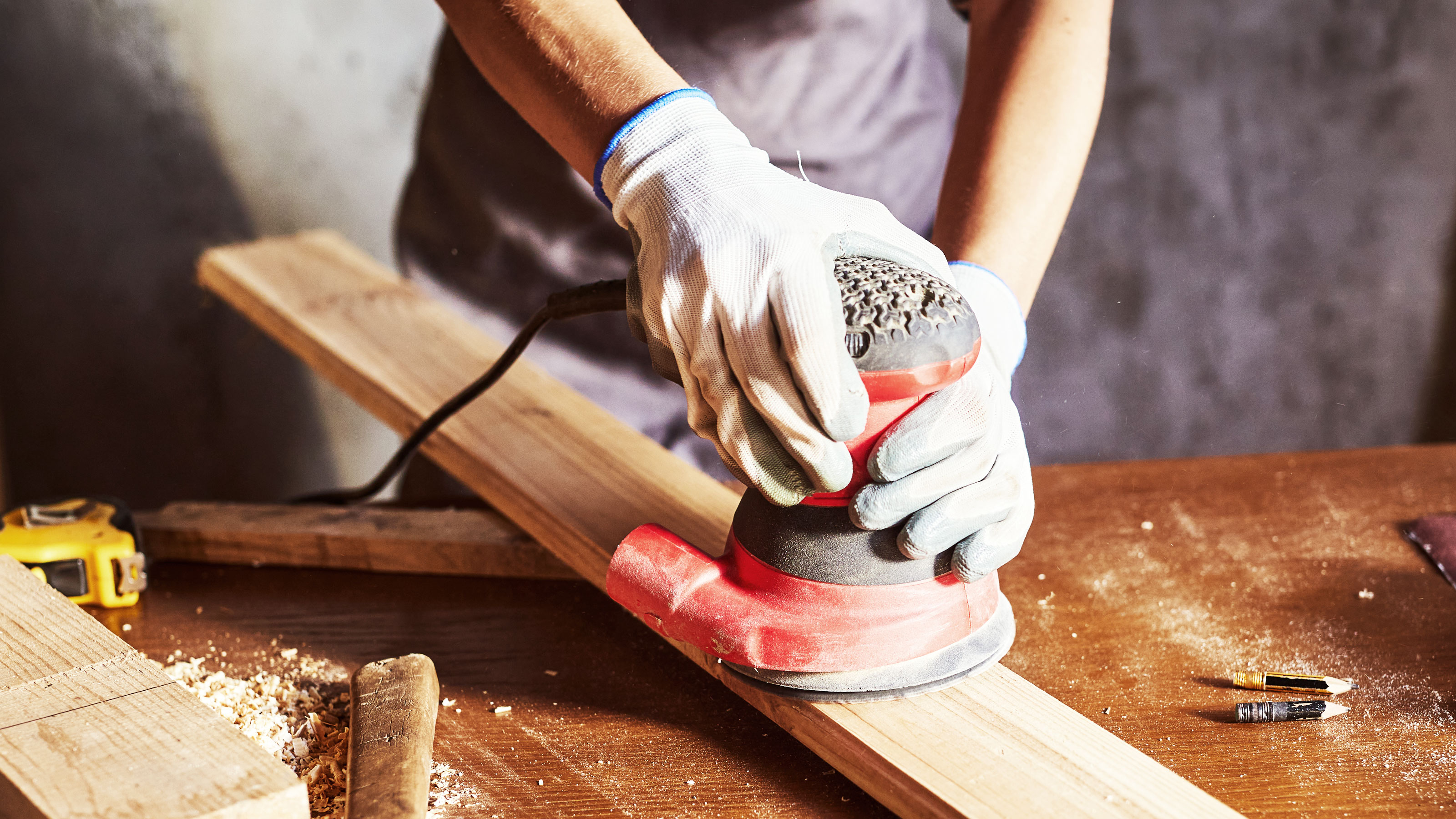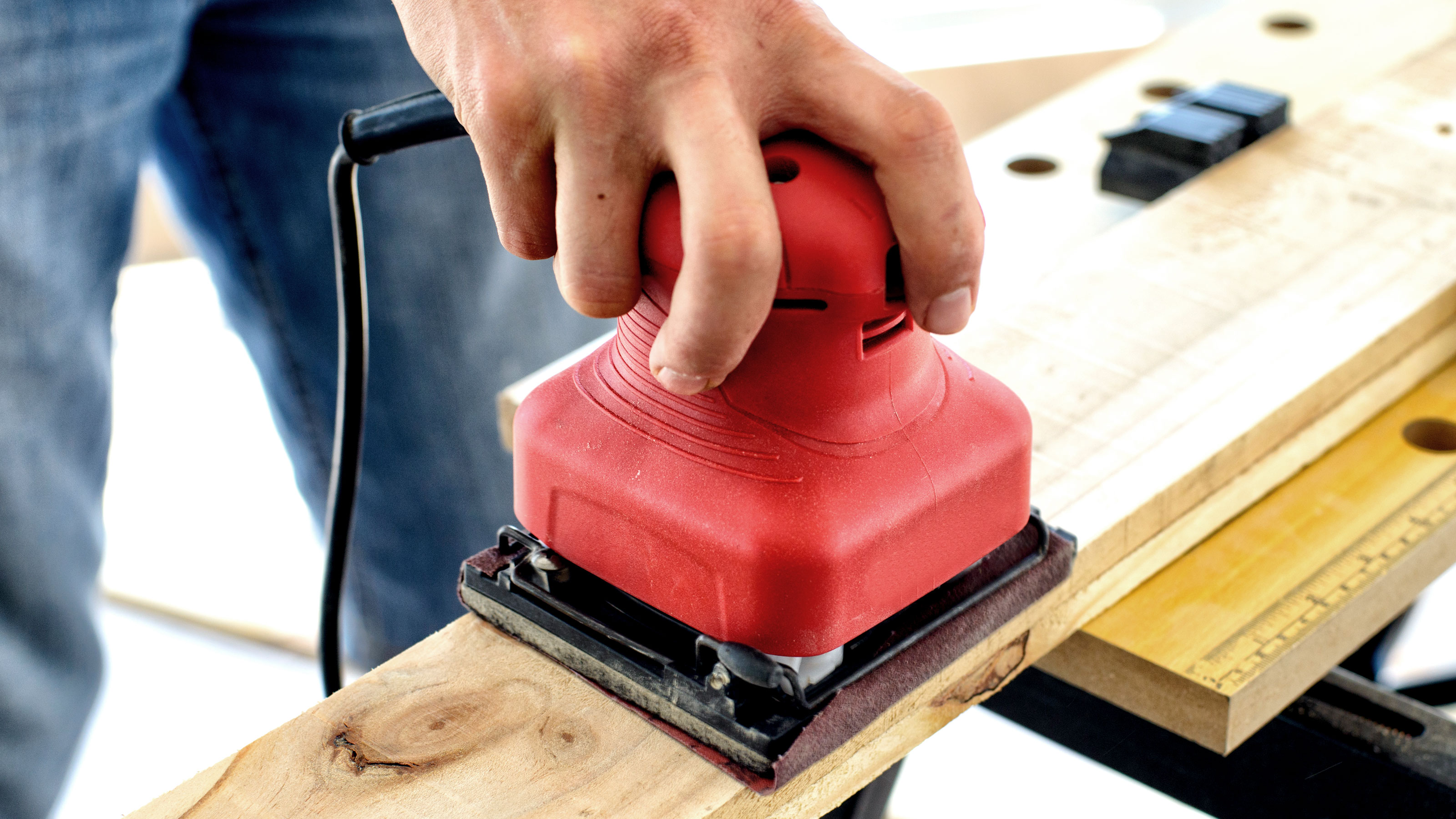Orbital sander vs palm sander: Which is best for your project?
Orbital sander vs palm sander is a question often asked by DIYers. Here we look at the differences to help you choose the right one for your needs

When you need a new sander what do you choose? Orbital sander vs palm sander is a common debate, but which you need depends on what projects you are working on. An orbital sander is more of an all-rounder than a palm sander, but you could easily need both.
The best orbital sanders and palm sanders can be reasonably low priced, so adding both to your collection – if needed – is a good idea, However, if you only want – or need – one sander in your collection we are here to explain the differences and help you make the right decision.
Orbital sander vs palm sander: What is the difference?
Orbital sanders are handheld power tools that come with a round pad that uses a sandpaper disc via a hoop and loop system to attach it. What sets an orbital sander apart from other sanders is that the pad spins and oscillates in an ellipse pattern. This helps reduce the sanding marks left on the sanded surface. You can read more in our piece on what is an orbital sander.
The pad on an orbital sander is commonly 125mm or 150mm in size which means you need a matching sanding disc. These typically come with eight holes that redirect the dust into a dust bag to help keep dust off surfaces and reduce the debris you breathe in.
A palm sander is the name commonly given to a sheet sander with a square sanding pad. They are also known as 1/4 sheet sanders because of the size of the sandpaper used. The base units are similar in size to an orbital sander and fit in the palm. The sanding sheets are held in place with a hook and loop system and a clamp system.
A palm sander use a circular motion similar to an orbital sander, commonly has a smaller motor and uses sanding sheets with holes to transfer dust to a bag.
When should I use an orbital sander?
Knowing how to use an orbital sander is a great asset for any DIYer or home renovator. It is an all round sander that is great for a host of sanding projects. It is ideal for large flat pieces of wood i.e. plywood or kitchen cabinets doors. It is a great choice for removing old paint or varnish in preparation for a fresh coat of paint or varnish.
Make sure you are choosing the right grit/grade for whatever job you are working on. Check out our sandpaper grades guide to get in depth insight and help you choose the right one.
Elsewhere an orbital sander can be used to smooth down plaster on walls and ceilings, get rid of rust from metal and prepare furniture for painting.
When should I use a palm sander?
A palm sander is a useful tool to have in your collection, but it is a little more specialist than an orbital sander. It’s considered more of a finishing sander, so is good for sanding down small imperfections in wood and readying it for paint, varnish or stain.
Where a palm sander does excel is getting into corners. The round pad on an orbital sander is no good for this, but the square pad on a palm sander is much more productive. This makes it ideal when doing the prep ready to paint a panel door. The pad gets neatly into the corners of each panel and it's also a good choice for sanding stairs.

How much do orbital and palm sanders cost?
The prices can vary greatly depending on the brand and what features the sander has. If you are an occasional DIYer who’ll use a sander a few times a year look at lower price models like the VonHaus 125mm Random Orbital Sander from Amazon. This got four out of five stars in our VonHaus Random Orbital Sander review. Or the Genesis 1/4 Sheet Palm Sander from Amazon. Both these models are under £40.
But if your sander is going to get regular use you can easily expect to pay over £100. These models are typically cordless, have brushless motors along with heavy duty components and build quality like the Dewalt Cordless Brushless XR Random Orbital Sander and DEWALT XR 1/4 Sheet Palm Sander, both from Amazon.
Get the Homebuilding & Renovating Newsletter
Bring your dream home to life with expert advice, how to guides and design inspiration. Sign up for our newsletter and get two free tickets to a Homebuilding & Renovating Show near you.
Steve Jenkins is a freelance content creator with over two decades of experience working in digital and print and was previously the DIY content editor for Homebuilding & Renovating.
He is a keen DIYer with over 20 years of experience in transforming and renovating the many homes he has lived in. He specialises in painting and decorating, but has a wide range of skills gleaned from working in the building trade for around 10 years and spending time at night school learning how to plaster and plumb.
He has fitted kitchens, tiled bathrooms and kitchens, laid many floors, built partition walls, plastered walls, plumbed in bathrooms, worked on loft conversions and much more. And when he's not sure how to tackle a DIY project he has a wide network of friends – including plumbers, gas engineers, tilers, carpenters, painters and decorators, electricians and builders – in the trade to call upon.

